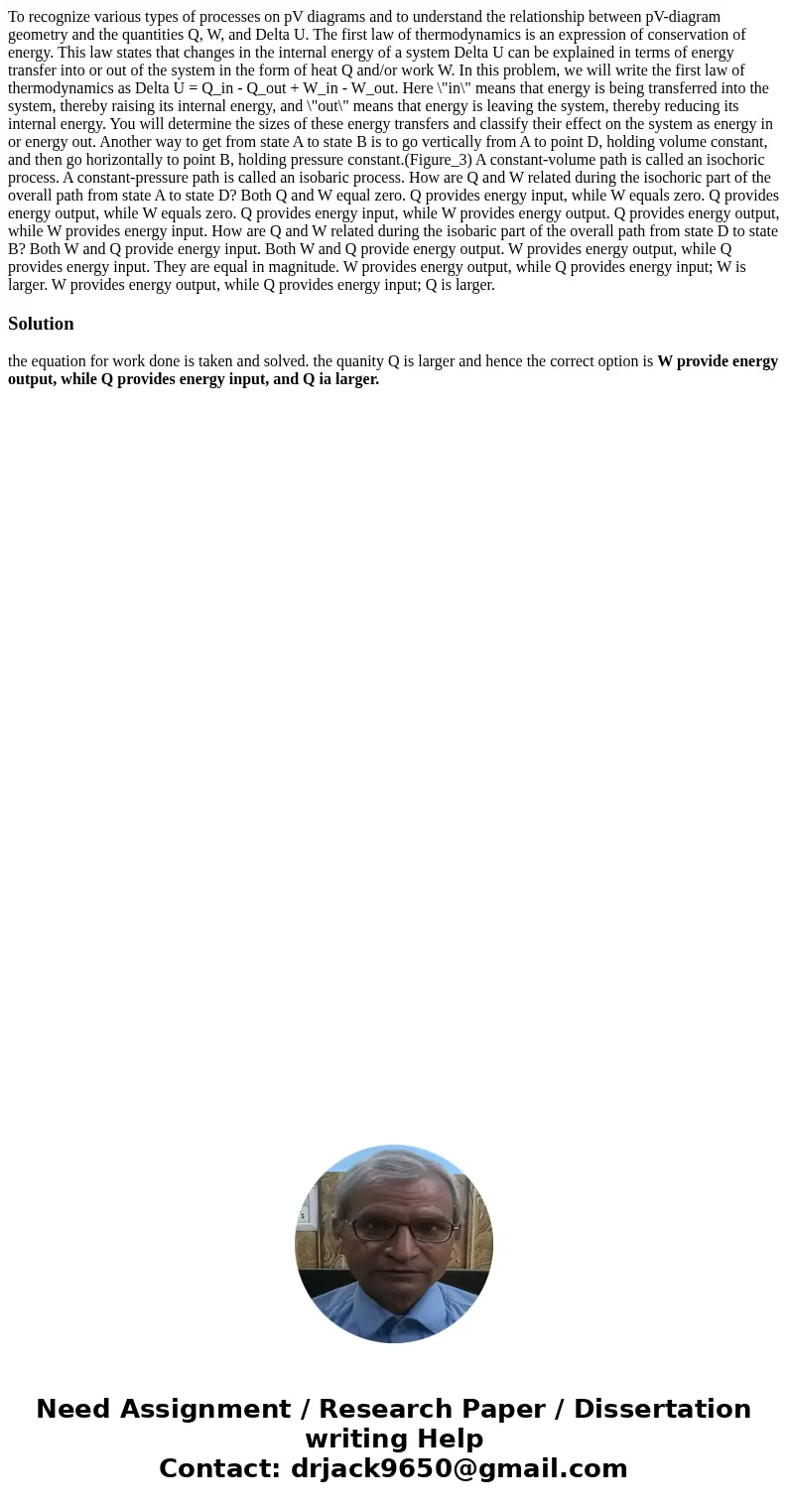To recognize various types of processes on pV diagrams and t
To recognize various types of processes on pV diagrams and to understand the relationship between pV-diagram geometry and the quantities Q, W, and Delta U. The first law of thermodynamics is an expression of conservation of energy. This law states that changes in the internal energy of a system Delta U can be explained in terms of energy transfer into or out of the system in the form of heat Q and/or work W. In this problem, we will write the first law of thermodynamics as Delta U = Q_in - Q_out + W_in - W_out. Here \"in\" means that energy is being transferred into the system, thereby raising its internal energy, and \"out\" means that energy is leaving the system, thereby reducing its internal energy. You will determine the sizes of these energy transfers and classify their effect on the system as energy in or energy out. Another way to get from state A to state B is to go vertically from A to point D, holding volume constant, and then go horizontally to point B, holding pressure constant.(Figure_3) A constant-volume path is called an isochoric process. A constant-pressure path is called an isobaric process. How are Q and W related during the isochoric part of the overall path from state A to state D? Both Q and W equal zero. Q provides energy input, while W equals zero. Q provides energy output, while W equals zero. Q provides energy input, while W provides energy output. Q provides energy output, while W provides energy input. How are Q and W related during the isobaric part of the overall path from state D to state B? Both W and Q provide energy input. Both W and Q provide energy output. W provides energy output, while Q provides energy input. They are equal in magnitude. W provides energy output, while Q provides energy input; W is larger. W provides energy output, while Q provides energy input; Q is larger. 
Solution
the equation for work done is taken and solved. the quanity Q is larger and hence the correct option is W provide energy output, while Q provides energy input, and Q ia larger.

 Homework Sourse
Homework Sourse